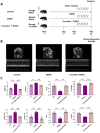Fucoidan Protects against Doxorubicin-Induced Cardiotoxicity by Reducing Oxidative Stress and Preventing Mitochondrial Function Injury
- PMID: 36142635
- PMCID: PMC9504360
- DOI: 10.3390/ijms231810685
Fucoidan Protects against Doxorubicin-Induced Cardiotoxicity by Reducing Oxidative Stress and Preventing Mitochondrial Function Injury
Abstract
Doxorubicin (DOXO) is a potent chemotherapeutic drug widely used to treat various cancers. However, its clinical application is limited due to serious adverse effects on dose-dependent cardiotoxicity. Although the underlying mechanism has not been fully clarified, DOXO-induced cardiotoxicity has been mainly attributed to the accumulation of reactive oxygen species (ROS) in cardiomyocytes. Fucoidan, as a kind of sulphated polysaccharide existing in numerous brown seaweed, has potent anti-oxidant, immune-regulatory, anti-tumor, anti-coagulate and anti-viral activities. Here, we explore the potential protective role and mechanism of fucoidan in DOXO-induced cardiotoxicity in mice. Our results show that oral fucoidan supplement exerts potent protective effects against DOXO-induced cardiotoxicity by reducing oxidative stress and preventing mitochondrial function injury. The improved effect of fucoidan on DOXO-induced cardiotoxicity was evaluated by echocardiography, cardiac myocytes size and cardiac fibrosis analysis, and the expression of genes related to cardiac dysfunction and remodeling. Fucoidan reduced the ROS content and the MDA levels but enhanced the activity of antioxidant enzymes GSH-PX and SOD in the mouse serum in a DOXO-induced cardiotoxicity model. In addition, fucoidan also increased the ATP production capacity and restored the levels of a mitochondrial respiratory chain complex in heart tissue. Collectively, this study highlights fucoidan as a potential polysaccharide for protecting against DOXO-induced cardiovascular diseases.
Keywords: cardiotoxicity; doxorubicin; fucoidan; mitochondrial function; oxidative stress.
Conflict of interest statement
The authors declare no conflict of interest.
Figures






References
MeSH terms
Substances
Grants and funding
LinkOut - more resources
Full Text Sources
Medical

